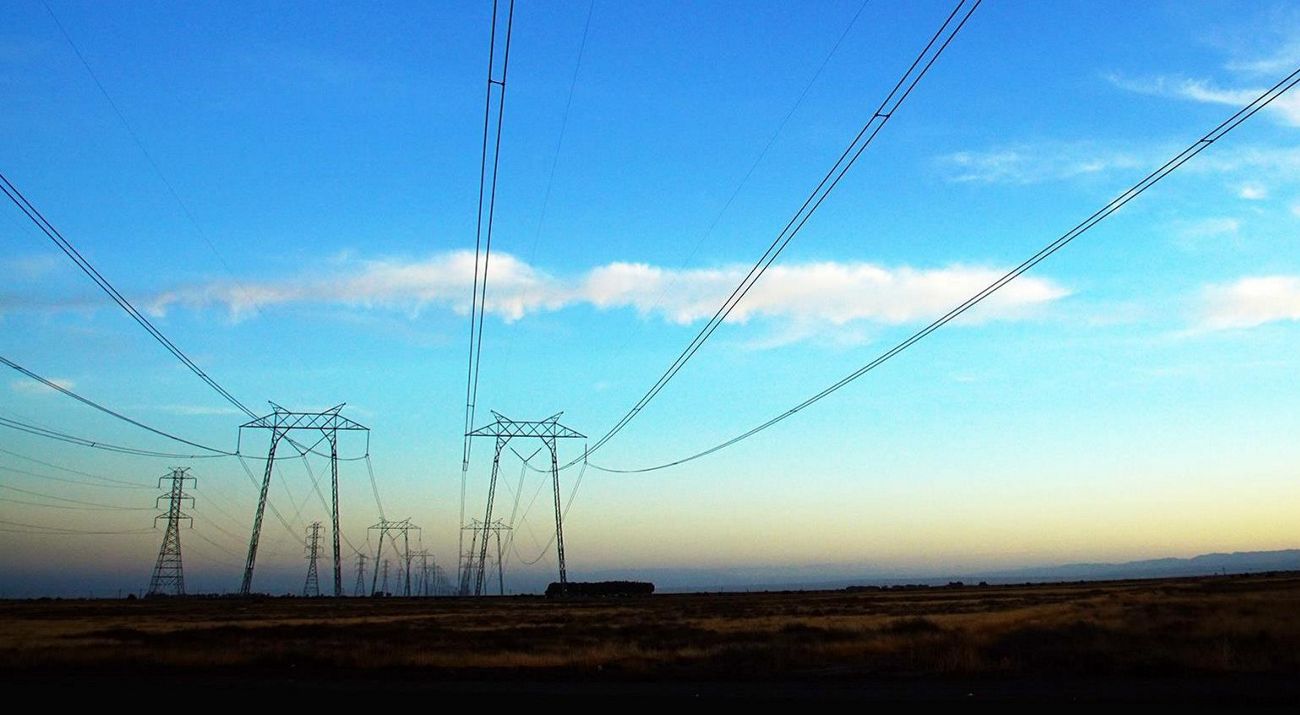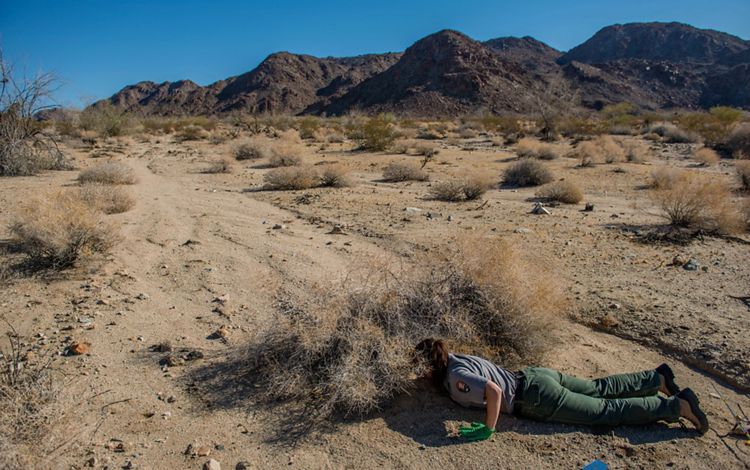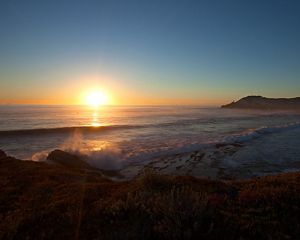
The Nature Conservancy's first Power of Place study focuses on California and lays out pathways for protecting important natural and agricultural lands while creating a 100% clean energy future for the state.
TNC’s Power of Place California Study is the one that started them all. The Nature Conservancy has recently expanded its research and has just released The Power of Place West Study, which takes a look at how we can get to net-zero carbon across the United States’ western states while minimizing impacts to the environment by being smart from the start in planning.
Countries around the world are looking for ways to drastically reduce carbon pollution, and “decarbonizing” the energy sector is one of the top solutions. Decarbonization requires moving away from fossil-fueled electricity and towards clean energy technologies, such as wind and solar. In 2018, California lawmakers set an ambitious climate goal to this effect: 100% clean electricity in 2045.
While this is a great sign for climate mitigation, it could also result in major impacts to natural habitat. Recent studies predict a doubling of power demand in California by 2050—power that will have to come from renewable sources. And that will mean exponentially more renewable energy development, which could potentially be sited on important natural and agricultural lands.
What is the impact to nature?
All energy sources have some impact on the environment—even renewables. Fortunately, as compared to fossil-fueled electricity, renewable energy has the potential to produce large amounts of clean electricity and reduce impacts on land, water, wildlife, human health and climate.
TNC's projections are that California may need between 1.6 and 3.1 million acres of wind and solar by 2050 to decarbonize the electricity system and support the movement to “electrifying everything." With so much development on the horizon, it’s imperative that energy planners incorporate impacts to nature when making decisions about a clean energy future.
TNC has developed a method for integrating nature into energy planning, and we tested our approach when California set a goal of 50% renewable energy by 2030. We found that incorporating nature at the outset of energy planning not only results in lower impacts to wildlife and habitat, but improves energy planning so that new clean energy investments are directed to the places where they can be developed with more certainty. In June 2019, we released a new study, called Power of Place, that takes our approach and scales it up to understand options for achieving California’s clean energy and climate goals in 2050.

POWER OF PLACE: CALIFORNIA
As California and other states move ahead in their efforts to meet climate goals, the best energy planning pathway is one that recognizes the power of place—a strategic approach to planning for clean energy with land conservation in mind. It’s not only possible, but critical to the health of the planet that the world reaches its climate goals quickly, while minimizing impacts to the environment.
To understand what California’s future might look like, TNC analyzed multiple development pathways for new clean energy to meet the state’s 2050 climate goals. This new study provides a roadmap for California to ensure that clean energy and nature conservation work together, starting now.

What We Discovered
Our 2019 study, Power of Place: Land Conservation and Clean Energy Pathways for California, makes the scientific case for proactive planning to limit environmental impacts as California plans for a clean energy future.
READ THE POWER OF PLACE: CALIFORNIA STUDY
Download
In total, TNC looked at 61 different clean energy futures for California, all compliant with the state’s goal of reducing carbon emissions to 80% below 1990 emissions levels, while still delivering 102-110% retail sales of zero-carbon electricity by 2050. Each scenario that we scoped resulted in different outcomes for land conservation, cost, geographic placement and renewable energy selection.
The report shows that:
- With planning, California can significantly ramp up renewables while also limiting land impacts. Through proactive planning that incorporates land and conservation data into energy decisions, California can make significant progress on decarbonization in 2050 while protecting important lands.
- In the absence of a plan to limit land impacts and scale renewables, impacts to natural and agricultural lands could be high. The study reveals that a large percentage of areas in the Western United States that would be prime spots for renewable energy development are also some of the most precious natural landscapes and important farmlands.
- An expanded grid across the West saves on electricity costs and, with proper planning, can lower energy development impacts to natural and working lands. When clean energy can be sourced across a larger area, there are more cost-effective opportunities to create balanced solutions for clean energy and land conservation.
Green Light Study
Over the past decade, TNC has pushed California to invest in proactive landscape-scale planning for solar that integrates conservation information and directs development to places of low biodiversity value. The benefits to nature of this approach have been well-documented. The Green Light Study is the first study to quantify the economic benefits of this approach using a selection of 16 utility-scale solar energy projects in California.
The trends documented in the Green Light Study indicate that it is both efficient and affordable to build solar energy facilities in areas of lower biodiversity value to meet our state’s clean energy goals. Specifically, low-impact solar energy benefits from:
Permitting timelines that are more than two and a half times shorter.
Substantially lower land acquisition requirements to mitigate solar development impacts.
Mitigation and habitat management costs that are over eight times lower, resulting in total project cost savings of up to 14%.
The Green Light Study is evidence that low-impact solar energy could help California maintain the pace and scale of clean energy development needed to address the urgent challenge of climate change while also protecting the state’s important lands and waters and minimizing costs.
READ THE GREEN LIGHT STUDY
Download
Win-Win for Nature and Renewable Energy




FACING A MODERN-DAY GOLD RUSH: TNC'S PROGESS ON RENEWABLE ENERGY IN CALIFORNIA
In the initial rush to meet California’s ambitious renewable energy goals, solar power plants were sited across millions of acres of the state, endangering irreplaceable habitat. In 2008, California mandated that it would generate one-third of its energy from renewable sources by 2020, inciting a race for solar project permits across the Mojave Desert. But the project-by-project approach quickly became mired by delays. Energy developers had few places to turn for information on how and where to site projects to minimize environmental damage and delay.
In response, TNC assessed the conservation value of the entire Mojave Desert and found that California could meet its renewable energy mandate seven times over while still protecting the Mojave’s most important habitat.
The Bureau of Land Management used TNC's science to inform a blueprint to balance conservation and clean energy development across the California deserts. The final plan, called the Desert Renewable Energy Conservation Plan, identified 388,000 acres of land—enough to power more than 8 million homes—where clean energy development should be prioritized. Next, TNC conducted a statewide assessment to determine how California could scale up to 50-percent renewable energy and still protect a network of thriving conservation and ranch lands. But as California aims for 100 percent zero-carbon electricity, it will be important to find solutions for developing a tremendous amount of new clean energy infrastructure.
That’s where Power of Place comes in. With the right planning and approach, California’s clean energy development can proceed at the pace needed to make progress on climate while also protecting nature.
HOW YOU CAN HELP
TNC is hard at work leveraging the Power of Place to move California and the nation towards a low-carbon economy through on-the-ground science, education and advocacy. TNC is advocating for:
- The California agencies tasked with conducting the SB100 implementation analysis to account for land and environmental impacts, in California and across the West, in the analysis;
- Investment in new science to develop solutions to decarbonization and land protection; and
- Investment in policies and plans that promote planning, buying and building clean energy while limiting environmental impacts.

As the world’s fifth-largest economy, California’s climate and clean energy leadership shapes how industries work together, provides a model for other states and countries and has demonstrates that its possible to protect the environment while growing the economy. California is off to a good start in planning to reach 100-percent zero-carbon electricity while limiting environmental impacts, but the work is only beginning.
Together, we have the power to develop clean energy, limit the emissions that cause climate change and protect natural resources for future generations.
Support Our Work
Let’s create a clean future that preserves wildlife habitat and iconic landscapes.




